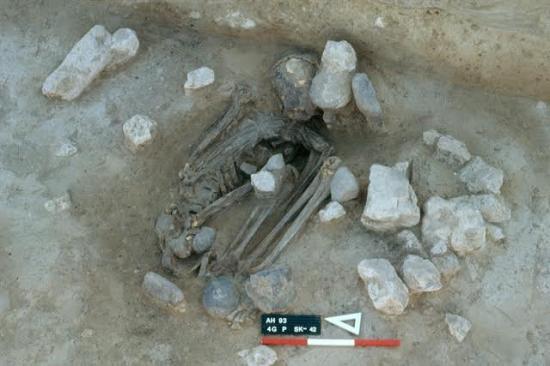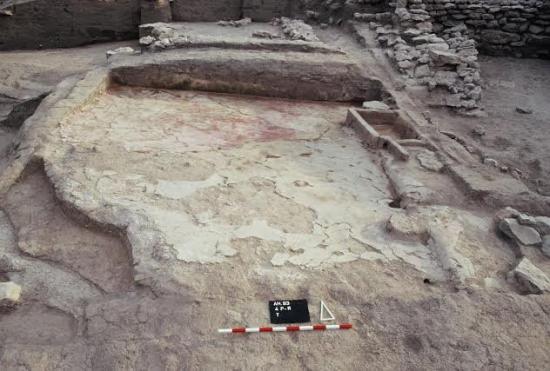Source - http://popular-archaeology.com/issue/june-2013/article/archaeologists-uncover-human-settlement-dated-to-the-dawn-of-civilization
 Excavated structural remains of the 8th millennium B.C. Aşıklı Höyük. Credit Aşıklı Höyük archive.
Excavated structural remains of the 8th millennium B.C. Aşıklı Höyük. Credit Aşıklı Höyük archive.
Aşıklı Höyük, a mound near the banks of the Melendiz River in southern Turkey, lies not far from the site of Çatalhöyük. Dated to about 7500 B.C., Çatalhöyük is famous for being one of the oldest and largest Neolithic sites ever found.
But Aşıklı Höyük dates back even earlier, to about 8000 B.C. Though less known and considerably smaller than Çatalhöyük, archaeological excavations at Aşıklı Höyük have revealed a richly informative window on small-town life about 10,000 years ago, long before the pyramids, ziggurats, palaces, and other monumental features of the emerging, more expansive ancient cities of Mesopotamia and Egypt emerged on the landscape.
First investigated by Professor Ian A. Todd in 1964, full-scale excavations of the site didn’t take place until 1989 under Ufuk Esin of the University of Istanbul. It became one of the largest excavations of the region, and is still the subject of archaeological investigations and research. The site finds included simple adobe house structures for a total of at least 400 rooms and as many as 70 burials beneath the house floors. The 1-to-2-room houses typically featured hearths, some houses with built-in earthen benches. Curiously, the houses were relatively dark inside, built essentially without doors and windows.
“These houses had no door for entry,” stated Heval Bozbay, who has been a member of the Aşıklı Höyük research team since 2009. “To enter a house, they had to ascend an exterior ladder and go inside through an opening in the roof, then descend an interior ladder. The only source of light was the opening in the roof one used to enter, and one or two holes in a wall, far too small to be called a window by modern standards.”
 A sub-floor adult burial in hocker position. Credit Aşıklı Höyük archive.
A sub-floor adult burial in hocker position. Credit Aşıklı Höyük archive.
Obsidian stone and other objects made from basalt, granite and tuff were found among the artifacts. Located in an area with a geologic past for volcanic activity, the inhabitants of this community had convenient access to a rich supply of volcanic material to produce their goods, obsidian being a highly valued resource that, according to the researchers, may possibly have been a commodity of trade with far-off communities in Cyprus and Syria.
Perhaps the most notable discovery relates to a peculiar 25-square-meter, square-shaped structure which showed evidence of a plastered interior painted entirely in red ochre. The investigation of the interior also indicated that in each corner there was a large stone upon which was placed a wooden post. “Archaeologists investigating the structure suggest that it was probably used as a ceremonial place, with evidence suggesting that a kind of fluid was poured at these ceremonies,” noted Bozbay.
A temple or important communal building? This question still remains unanswered.
 The special or communal building. The floor and walls of the building painted red. Different layers of the building can be seen on the bottom left corner of the photo. Credit Aşıklı Höyük archive.
The special or communal building. The floor and walls of the building painted red. Different layers of the building can be seen on the bottom left corner of the photo. Credit Aşıklı Höyük archive.
Today, visitors to the site can view modern reconstructions of the houses and view the mound where excavations have been taking place. Research continues at the site and archaeologists hope that Aşıklı Höyük, like the other better-known Neolithic sites such as Çatalhöyük and Göbekli Tepe, will provide valuable insight on how early Neolithic people lived and how their communities formed the foundation upon which the great civilizations that ringed the Mediterranean were built.
A more detailed article about Aşıklı Höyük, authored by Heval Boznay, will be published in the Fall 2015 issue of Popular Archaeology Magazine.